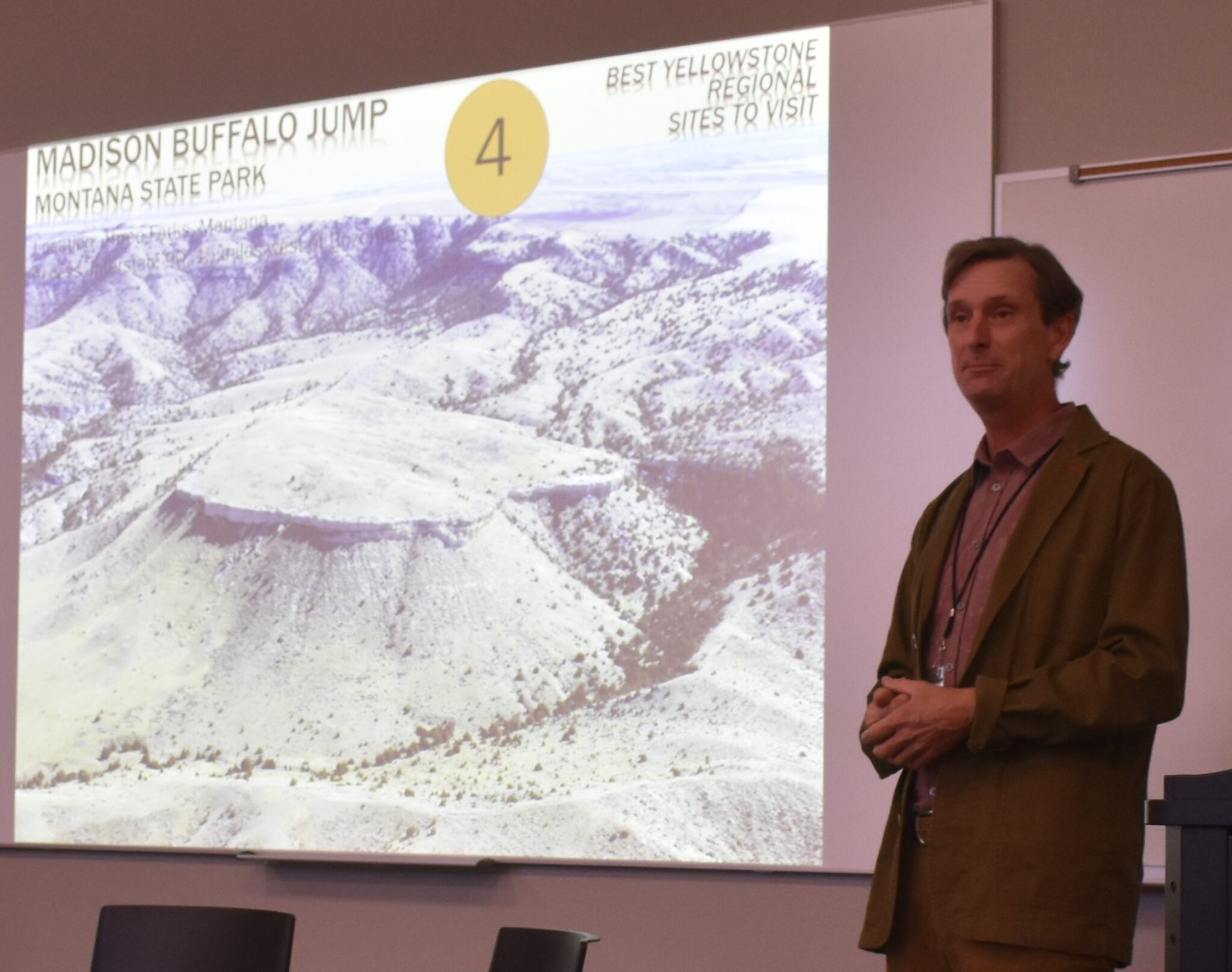News
SCLT In Bloom Features Talks on Yellowstone Archaeology

The Sheridan Community Land Trust held its Bloom Fundraiser on Saturday night at Sheridan College. Over 100 people attended, participated in the fundraiser, and listened to the two talks about Native American archaeology in Yellowstone.
Douglas MacDonald, professor of archaeology at the University of Montana Missoula, presented the talks. He mentioned two of his books, “Montana Before History: 11,000 Years of Hunter-Gatherers in the Rockies and Plains” and “Before Yellowstone: Native American Archaeology in the National Park.”
One talk focused on several sites in and around Yellowstone that are open to the public, which included the Colby Mammoth Site near Worland, and the Washakie County Museum collection of artifacts from the site.

He said that many different tribes hunted in and around Yellowstone, the Crow, Shoshone, Blackfeet and the Nez Perce. He said the park archeologists consult with 27 different tribes. He talked about Chief Josephs and the Nez Perce tribe’s route through Yellowstone in 1877 as they evaded the United States Army trying to get to Canada to join up with Sitting Bull’s tribe. They thought the Crow would help them, but the Crow did not, instead stealing some of their horses.
He said that contrary to the often-repeated belief that the tribes considered Yellowstone as an evil place, many tribes have hunted in and around Yellowstone for over 10,000 years. They believed that there were spirits there, but they were good as well as bad. MacDonald also said that Yellowstone was also used as a place for prayer, fasting and spiritual activities.

He added that the Shoshone especially believed that the spirits traveled through the warm water from Yellowstone to Thermopolis. They would attempt to harness those spirits to make themselves more powerful.
One reason they came into Yellowstone was to hunt, MacDonald said. There is a lot of water and good grazing in the park, and the heat from the geysers in the winter drew the animals to the warmth, making it a good place to find wildlife.

After MacDonald’s first talk, SCLT members held the fundraiser with Jake Gay of Brannian Auction LLC service donating his auction services. There were several items in both the silent and live auction, as well as the ‘Paddle Raise’ where community members pledged monetary support to SCLT projects.

MacDonald’s second talk featured his work in Yellowstone National Park, with slides of the several of the sites.
He talked about obsidian cliff, where the tribes mined the obsidian for spear and arrow heads and other tools. The obsidian was also traded to other tribes, but he felt that the Ohio tribes must have come to Yellowstone, as 300 pounds of obsidian by trade is “a little challenging”.

He felt that one reason for believing that the Ohio tribes came west to mine obsidian was the fact that many of these tribes had bighorn sheep motifs on their pottery. Big horn sheep are not found in Ohio but are only found in the Rocky Mountains. He said the route they may have taken from Ohio to Rocky Mountains was close to the route that Lewis and Clark took on their trip west.
He mentioned that if Lewis and Clark did the trek from east to the Pacific 200 years ago, there is no reason to think that the Native Americans couldn’t have made the trip 2000 years ago.
He also talked about taking canoes across Yellowstone Lake and finding many Native American camp sites along the shores of the lake. He said the highest density of sites in Yellowstone is along the shores of Yellowstone Lake. He mentioned that there were Clovis projectiles found in Yellowstone, as well as at the Colby Mammoth Kill Site near Worland.

He said that melting snowpacks in Yellowstone have also uncovered many artifacts, as the tribes often hunted animals on the snow fields during the summer months, and many tools have been discovered as the snow fields melted.
He added that being able to work in Yellowstone made him the “luckiest archaeologist in Wyoming.”

